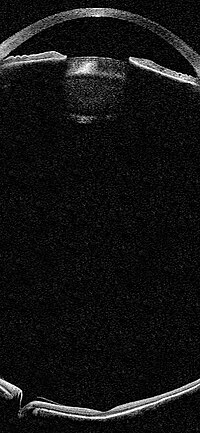
Photo from wikipedia
Diagnosis and treatment in ophthalmology depend on modern retinal imaging by optical coherence tomography (OCT). The recent staggering results of machine learning in medical imaging have inspired the development of… Click to show full abstract
Diagnosis and treatment in ophthalmology depend on modern retinal imaging by optical coherence tomography (OCT). The recent staggering results of machine learning in medical imaging have inspired the development of automated segmentation methods to identify and quantify pathological features in OCT scans. These models need to be sensitive to image features defining patterns of interest, while remaining robust to differences in imaging protocols. A dominant factor for such image differences is the type of OCT acquisition device. In this paper, we analyze the ability of recently developed unsupervised unpaired image translations based on cycle consistency losses (cycleGANs) to deal with image variability across different OCT devices (Spectralis and Cirrus). This evaluation was performed on two clinically relevant segmentation tasks in retinal OCT imaging: fluid and photoreceptor layer segmentation. Additionally, a visual Turing test designed to assess the quality of the learned translation models was carried out by a group of 18 participants with different background expertise. Results show that the learned translation models improve the generalization ability of segmentation models to other OCT-vendors/domains not seen during training. Moreover, relationships between model hyper-parameters and the realism as well as the morphological consistency of the generated images could be identified.
Journal Title: Biomedical optics express
Year Published: 2020
Link to full text (if available)
Share on Social Media: Sign Up to like & get
recommendations!